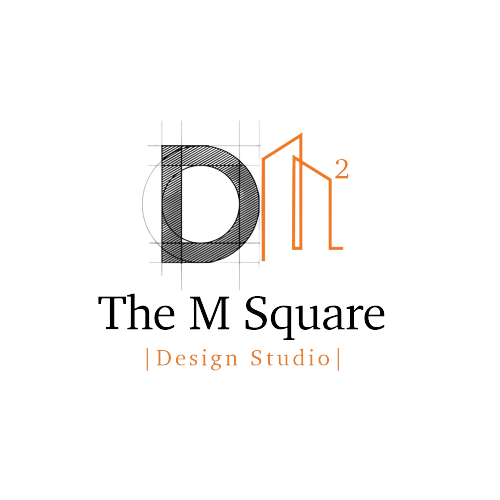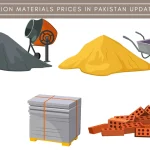Pakistan’s Reach for the Sky: Exploring the Tallest Buildings
Pakistan, a nation pulsating with rapid development and modernization, boasts an impressive collection of skyscrapers shaping its urban skylines. From Karachi’s gleaming towers to Islamabad’s architectural marvels, the country’s tallest buildings stand as testaments to innovation and ambition.
In this blog post, we’ll embark on a virtual tour of Pakistan’s 10 tallest buildings. We’ll delve into their unique features, history, and explore some little-known facts. Whether you’re an architecture enthusiast, a lover of cityscapes, or simply curious about Pakistan’s urban landscape, get ready to have your mind stretched as we journey upwards!
The Rise of the Pakistani Skyscraper
The history of tall buildings in Pakistan began in the early 1960s with the construction of the iconic Habib Bank Plaza in Karachi. Standing tall at 102 meters, it held the title of the tallest building in Pakistan for several decades. This landmark structure sparked a wave of skyscraper development, particularly in the bustling port city of Karachi.
As the years progressed, Pakistan’s architectural services continued to evolve. The emergence of new technologies, building materials, and a growing economy fueled the construction of even taller and more ambitious skyscrapers. These towering structures symbolize Pakistan’s economic aspirations and its desire to stand tall among the nations of the world.
Tallest Building of Pakistan
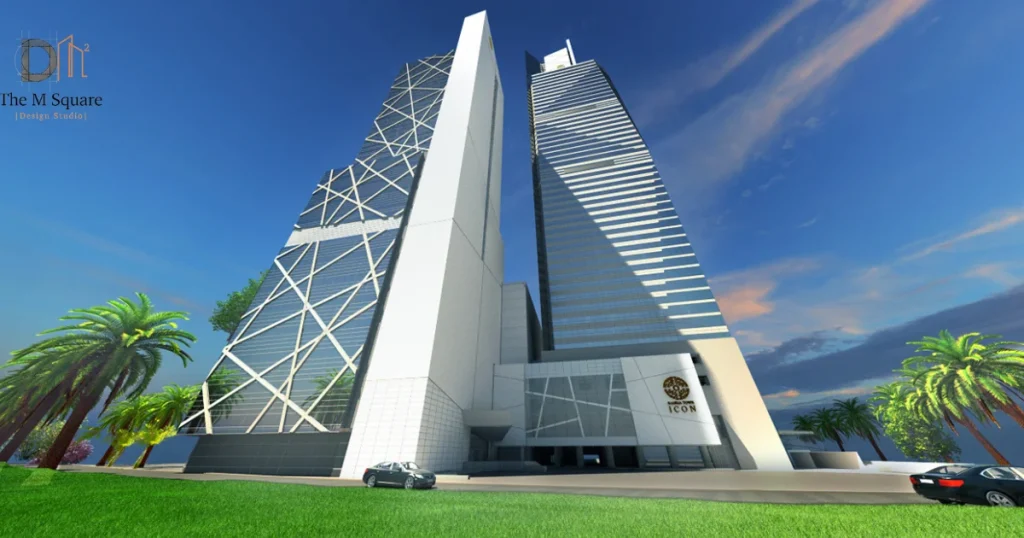
Bahria Icon Tower (Karachi)
- Height: 273 meters (896 ft)
- Floors: 62
- Built: 2021
The Bahria Icon Tower reigns supreme as Pakistan’s tallest skyscraper. Located in the bustling metropolis of Karachi, this mixed-use marvel houses offices, apartments, and a hotel. Did you know that the Bahria Icon Tower features a unique twisting design inspired by the “shell of a nautilus”? It’s not just about height – this building showcases cutting-edge architectural aesthetics!
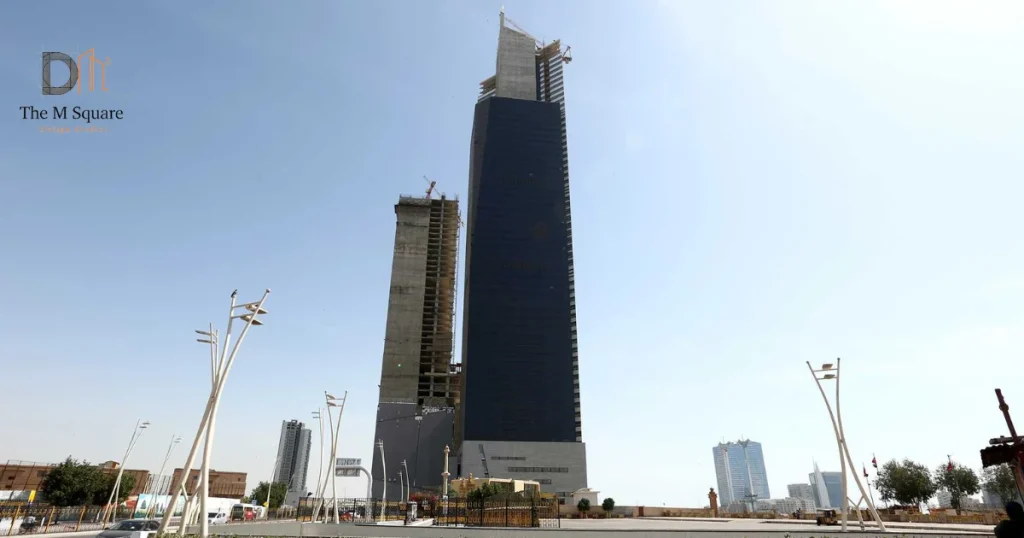
Bahria Hotel Tower (Karachi)
- Height: 230 meters (755 ft)
- Floors: 45
- Built: 2021
Yet another Karachi icon, the Bahria Hotel Tower holds the position as the second tallest building in Pakistan. As its name suggests, it’s a luxurious hotel offering breathtaking views of the city and the Arabian Sea. Interestingly, this sleek structure has a dedicated helipad on the roof, allowing for a grand arrival and departure experience.
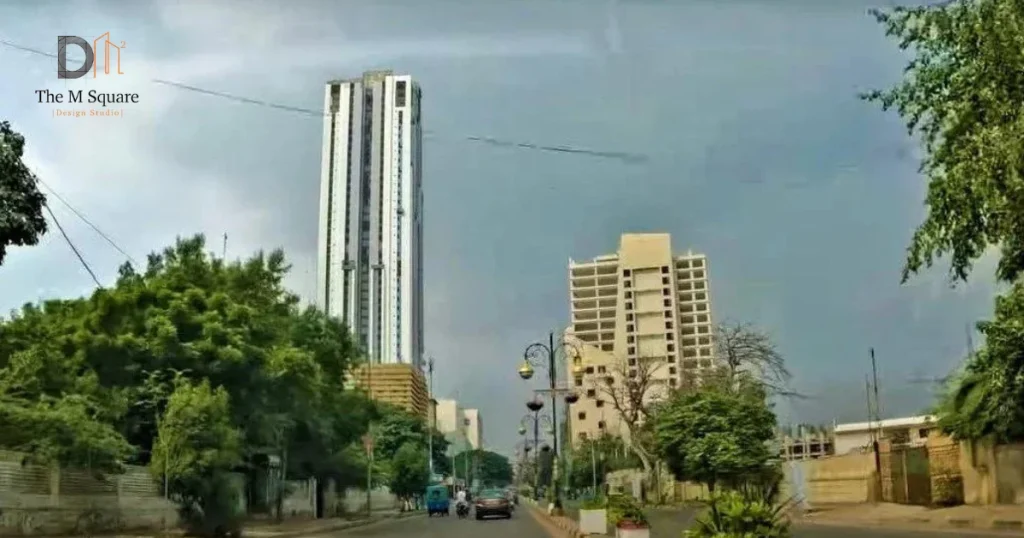
Chapal Skymark (Karachi)
- Height: 210 meters (689 ft)
- Floors: 50
- Built: 2020
The Chapal Skymark makes a bold statement on the Karachi skyline and currently holds the title of Pakistan’s tallest residential tower. A fascinating tidbit: This skyscraper was built in a record time of just three and a half years, reflecting the impressive pace of construction in the city.
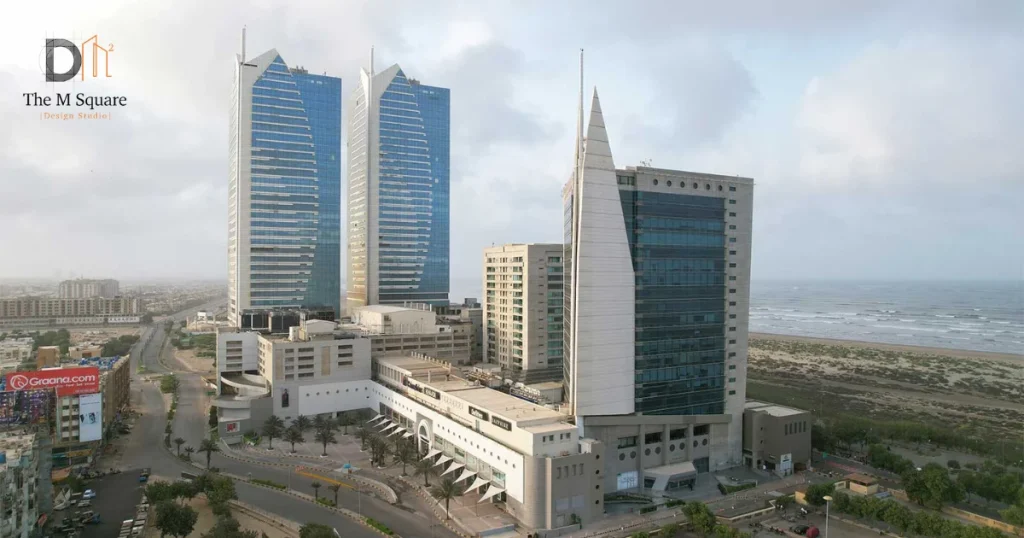
Dolmen Tower 3 and 4 (Karachi)
- Height: 175 meters (574 ft) & 174.5 meters (573 ft)
- Floors: 42 & 42
- Built: 2019
The twin towers of the Dolmen City complex in Karachi offer a mix of commercial and residential spaces. These structures stand tall as pioneers in modern construction. Did you know that Dolmen City was the first mixed-use development to grace Karachi’s cityscape? These towers changed the way people live and work in the city!
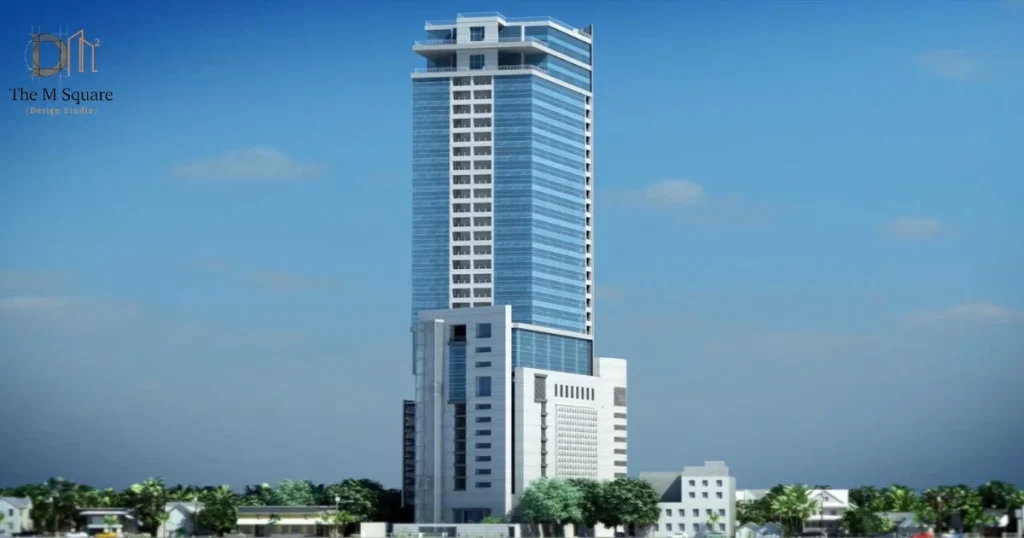
Hoshang Pearl (Karachi)
- Height: 160 meters (525 ft)
- Floors: 35
- Built: 2018
Hoshang Pearl adds a touch of elegance to Karachi’s skyline with its residential apartments. It boasts a range of amenities that cater to luxury and comfort, including a swimming pool, gym, and even a cinema! This tower reflects Pakistan’s growing demand for high-end living spaces.
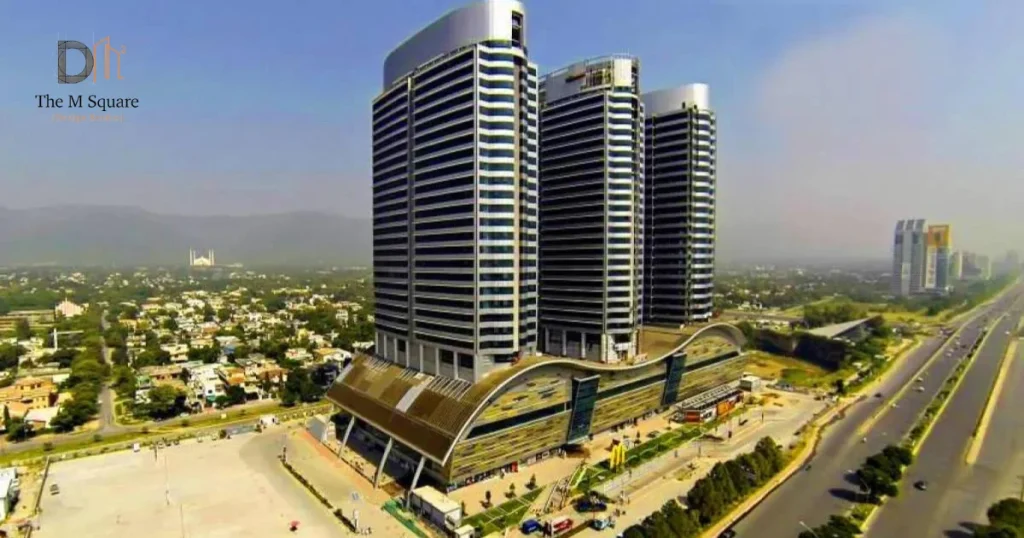
The Centaurus (Islamabad)
- Height: 110 meters (361 ft)
- Floors: 37
- Built: 2011
Situated in the heart of Islamabad, The Centaurus is a mixed-use development with residential towers, a 5-star hotel, and a sprawling shopping mall. A unique fact: This complex features a unique, eye-catching three-tower design interconnected at the base, making it an architectural landmark in the capital city.
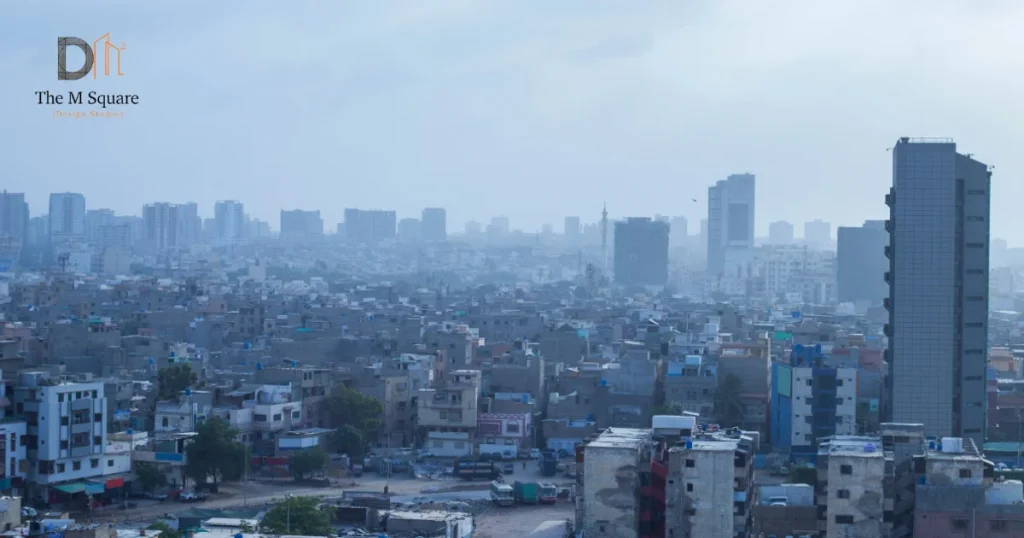
MCB Tower (Karachi)
- Height: 116 meters (381 ft)
- Floors: 29
- Built: 2005
The MCB Tower, a landmark in Karachi’s financial district, once held the title of Pakistan’s tallest building. This office tower reflects the city’s long-standing position as the commercial hub of the country. Interestingly, its sleek design makes it stand out amongst the older Karachi structures showcasing modern architectural trends.
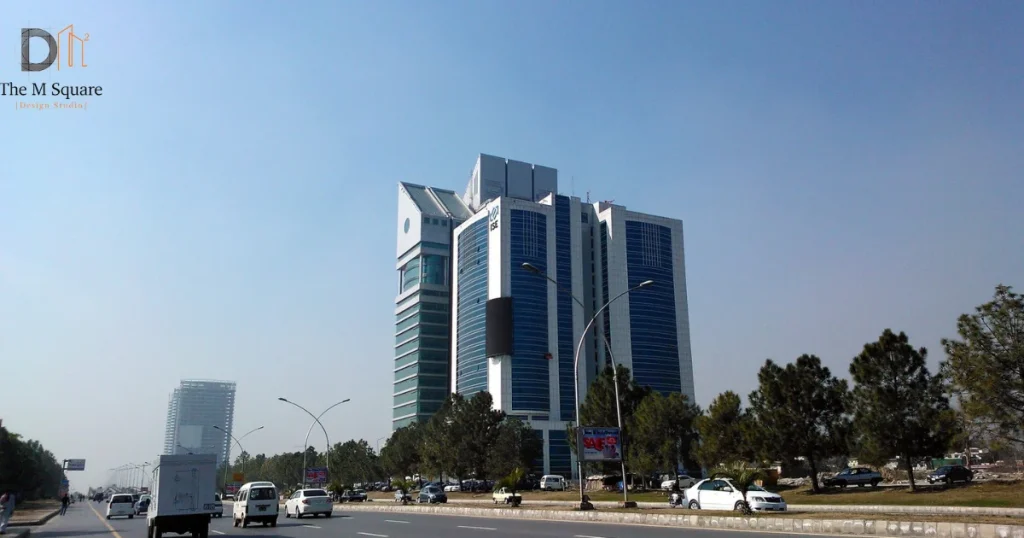
Telecom Tower (Islamabad)
- Height: 113 meters (371 ft)
- Floors: 28
- Built: 2011
Also known as the Ufone Tower, the Telecom Tower houses the headquarters of a major telecommunications company in Islamabad. While not as tall as its Karachi counterparts, this building holds significance in being one of the earlier high-rises in the capital, paving the way for future urban development.
The Fascinating Details
Beyond the basic facts and figures, the world of Pakistan’s tallest buildings is filled with fascinating stories and lesser-known details. Here’s a glimpse into some of the intriguing aspects that often get overlooked:
- Architectural Influences: The designs of Pakistani skyscrapers showcase a blend of traditional and contemporary architectural styles. You’ll find elements of Islamic architecture, particularly in the intricate details and geometric patterns, seamlessly integrated with modern glass and steel facades.
- Engineering Challenges: Constructing these megastructures in Pakistan poses unique engineering challenges. The country’s seismic activity and coastal climate require careful planning and innovative construction techniques to ensure the buildings’ stability and longevity.
- Sustainable Features: Some of Pakistan’s newer skyscrapers are incorporating environmentally conscious design principles. Features like energy-efficient lighting, rainwater harvesting systems, and green spaces are becoming increasingly common.
The Future of Skyscraper Development in Pakistan
The future looks bright for skyscraper development in Pakistan. Several ambitious projects are currently in the pipeline, promising to push the boundaries of height and design even further. Here are a few exciting things to watch out for:
- Mixed-use Developments: The trend of mixed-use skyscrapers continues to gain momentum. These complexes offer a blend of residential, commercial, and sometimes even recreational spaces, creating self-contained communities within a single structure.
- Focus on Sustainability: There’s a growing emphasis on designing taller buildings with sustainability at their core. Expect to see more skyscrapers featuring green technologies and energy-efficient systems.
